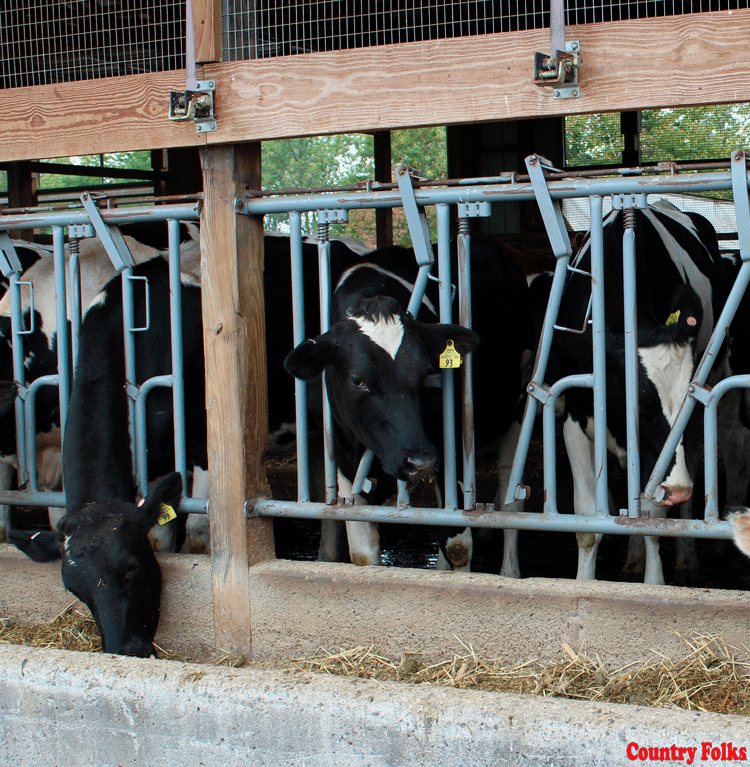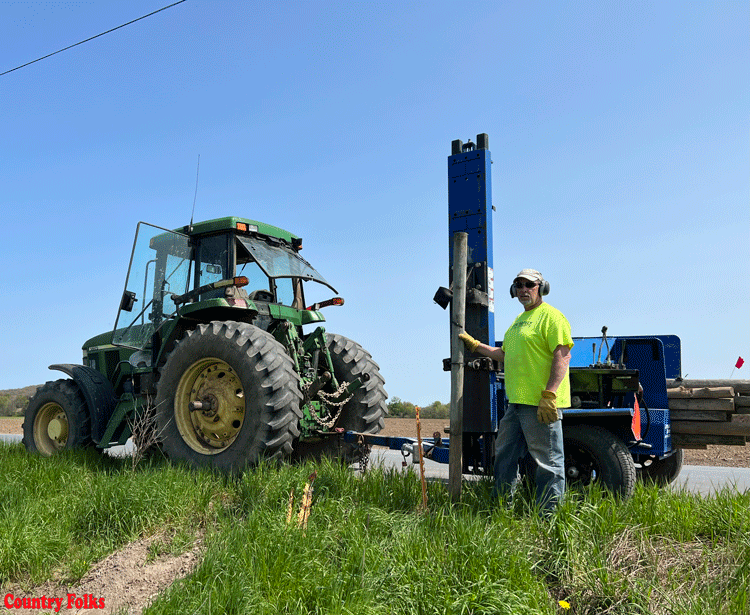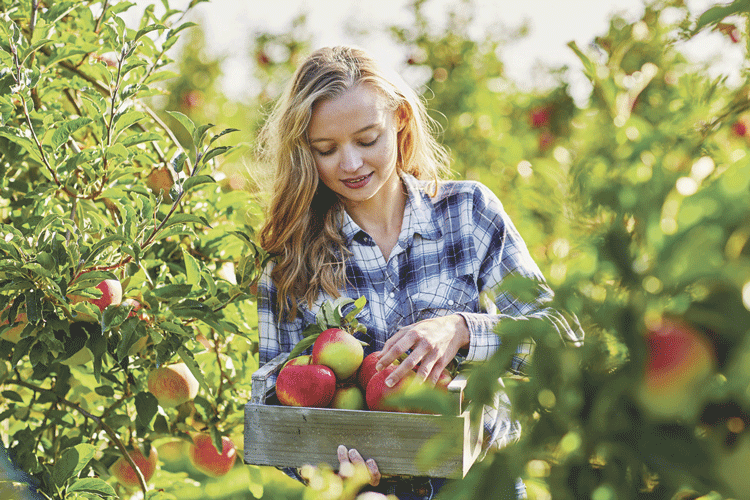Shortly after New Year’s Day, 48 animal science students and faculty from the universities of Maine, New Hampshire, Vermont, Massachusetts and Rhode Island gathered for the annual Winter Dairy Travel Course.
This collaborative trip has existed for over 25 years. It is a unique opportunity for students across various institutions to network with each other and faculty and industry professionals while sharing a common interest in the dairy sector. This wonderful educational program was made possible by the support of Northeast Farm Credit’s AgEnhancement Program, the hospitality of the farms and businesses visited and the patience of our bus driver.
The tour began Jan. 8 at the W.H. Miner Institute in Chazy, NY. Participants were given a comprehensive presentation about the various student internship opportunities offered at Miner. Afterward, walking tours of the calf and cow barns took place. The calf barn was built in 2021, is temperature-controlled and includes state-of-the-art facilities to house about 100 calves individually on a bedded pack. Of the two cow barns, one is for transition cows, featuring a maternity area; the other is the mature/research cow barn that houses about 550 cows and a double-12 parallel milking parlor. The cows used for research have individual feed bins and wear rumination collars to monitor endpoints pertaining to nutrition and rumination.
The next three days would be spent in Woodstock, ON, Canada.
On the second day, touring began at Fraeland Farm. This farm originated in 1980 with 80 cows in a free-stall barn and a milking parlor. The barn was renovated in 2013 to expand to 100 stalls, and then again in 2019 to switch to two milking robots. The decision to switch to robotic milking was chosen to reduce labor needs. This herd has some of the best genetics in the region and they conduct embryo transfer (ET) on these cows to later sell – they are highly sought after. When summer rolls around, the cows are turned out on pasture and the breeding stock are kept nearby for monitoring.
The next stop was Wallenstein Feed Supply. The company began in 1958 when the first feed mill was purchased. The company is currently constructing their fifth mill and they are now the largest independent feed supply company in Canada, with over 280 employees and 85 delivery trucks. The company also employs several nutritionists and veterinarians to develop diets formulated for a variety of animals – they have produced over 900 different ruminant feeds alone.
The last stop this day was Summitholm Holsteins. Established in 1947 with just 15 cows, it has grown into a modern operation that consists of about 500 cows, a double-16 parlor and on-farm processing which they market independently, including a home delivery service. The store recently built on site hosts monthly community events and sells a variety of dairy items. A unique feature of Summitholm Holsteins is that they genomic test their cows to keep those producing A2A2 milk, a potential niche market.
The third day began at Scenic Holsteins, a farm featuring its own cheesemaking plant. In addition to learning about cheesemaking and touring the facility, they offered the group samples of their award-winning cheeses. The farm was established in 1996 with 50 cows and has since grown to about 250 cows to keep pace with the growing cheesemaking business. Special features of the animal areas included housing the milking, dry and pregnant cows all in one spacious barn with their own sections and a parlor flush system that enables water to be collected, cleaned (separating the sand and solids) and then recycled for repeated use. The heifers were kept in a separate barn.
Next, the group arrived at Boernview Farm, which boasts 11 robotic milkers and over 450 cows. Owner Roger Boersen met the group in the foyer of their operational building, a unique cross-ventilated barn. Boersen said the airflow in this building was the best of all of their facilities with an average airspeed of 7 mph where the cows stood at the feed rail and 3 mph at the stalls. Cows are moved to the calf/maternity barn just before calving and then remain there to give birth. The barn also has a separate pasteurization room where all the milk fed to calves is prepared. Another barn nearby houses calves of a slightly older age, all the way up to heifers just days away from calving and eventually joining the milking herd.
The third stop was Hogendoorn Dairy, a farm with an impressive 60-cow rotary milking parlor and other state-of-the-art technology. Each barn of this operation was, according to the owner, constructed 100% by the Hogendoorn family from the ground up. After the milking parlor, the group headed to the “Calf Division.” This barn contained nearly a dozen pens, each filled with calves at varying stages of growth, before being moved to the heifer barn, and then the cow barn of about 300 milking cows. This farm uses a sand and manure separator, which separates and cleans bedding sand for reuse. The farm also had two separate buildings to house equipment, ranging from tractors to cultivation implements to harvesting combines.

The Winter Travel Dairy Course group visited the University of Guelph in Ontario as part of their five-day excursion. Photos courtesy of URI
The last day in Canada took the group to the University of Guelph’s Elora Dairy and Ontario Beef Research Centre. This research facility, built in 2013, focuses mostly on animal nutrition, animal welfare and behavior. Here, several groups of cows were housed in a similar setup to the other dairies visited, with cows separated by age, production status and health. Unlike other farms, however, this facility also contained a tie-stall barn to house 24 cows individually. The cows used for research here are only ever kept in the tie-stall for one research project at a time. Every cow in the facility will at some point be part of a research study at least once during her lifetime.
The bulk tanks – one with an 8,000-gallon capacity and the other around 800 gallons – have an average somatic cell count of 195,000 cells/mL. The barns were extremely large with a very low stocking density at both the feed bunk and stalls. The four calf units were comfortably stocked with each calf unit structured as an individual room bedded with shavings and containing one to four isolation stalls. The heifer barn was very similar to the cow barn with multiple open stalls, a well-ventilated living area and feeding containers specific to each cow for feed trials. They also utilize a 24-cow rotary milking parlor which serves as their primary milking system. Robotic milking units were also evident and being used for cow behavioral research.
The university beef barns each had several maternity pens and could house up to 115 Angus cows. Historically, the cows have been genetically selected for calm temperament and growth traits. Across from the beef barns were about 48 feed bunks, each covered by a permanent roof to protect the different research trial diets. This system was impressive and thoughtfully planned prior to its construction.
The group stopped for a quick photo in front of a special site in the heart of Woodstock: the commemorative statue dedicated to “Springbank Snow Countess,” a cow who lived from 1910 to 1936 and was Ontario’s highest producer for many years. Within 10 lactations, she produced 207,505 lbs. of milk, 9,062 lbs. of butterfat and an average protein test of 4.57%.

The group’s final visit was to Karnview Dairy, who bring their own achievements to the Holstein breed. In vitro fertilization (IVF) and ET are the primary economic drivers of this herd, thus integrating new genetics with each cow generation. The highlight of this show barn was seeing “Karnview Gunshow Chief Beyonce” (or as the owner referred to her, “the Chief”). This cow holds titles in both the show ring and in provincial and national production records. Compared to the lifetime production of the famous Springbank Snow Countess, the Chief has already produced a considerable portion of that production record in just three years.
Back in Chazy, NY, each school bid each other farewell, thankful for the good company on this incredible journey. The groups are very appreciative of the farms and businesses that took the time to offer unique and memorable experiences. The students would like to thank their professors – their mentors – for making this trip possible. They would like to thank Northeast Farm Credit’s AgEnhancement Program for making this trip happen.
by Ross Reese and Kailie Raynor, URI










Leave A Comment